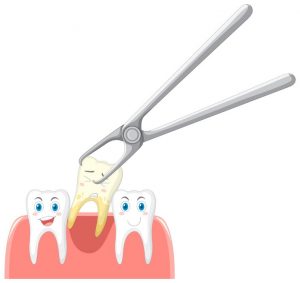Painless Tooth Extraction

Procedures

Careful Examination & Planning
Precise assessment for customized treatment

Minimal Pain & Quick Healing
Local anesthesia and latest protocols accelerate recovery

Post-Extraction Care
Receive guidance on aftercare to promote healing and prevent complications.

Maintenance Plan
Visit after two months for replacement by bridge or implant.
FAQs
An impacted tooth refers to a tooth that fails to emerge fully into its expected position in the mouth due to obstruction by other teeth, bone, or soft tissue. This commonly occurs with wisdom teeth (third molars) but can also affect other teeth. Impacted teeth can cause pain, swelling, infection, and damage to adjacent teeth and bone if left untreated. Treatment typically involves extraction to alleviate symptoms and prevent complications.
In many cases, impacted teeth, particularly impacted wisdom teeth, are recommended for removal if they cause pain, infection, damage to surrounding teeth, cyst formation, or gum disease. Even if they are not currently causing issues, impacted teeth may still be extracted as a preventive measure to avoid potential future problems.
Anterior and posterior tooth extraction refer to the removal of teeth located in different regions of the mouth.
- Anterior Tooth Extraction: Anterior teeth are the front teeth, including incisors and canines. Anterior tooth extraction involves the removal of these teeth, typically due to severe decay, infection, trauma, or orthodontic reasons.
- Posterior Tooth Extraction: Posterior teeth are the back teeth, including premolars and molars. Posterior tooth extraction involves the removal of these teeth, which may be necessary due to decay, infection, gum disease, impaction, overcrowding, or orthodontic treatment planning.

